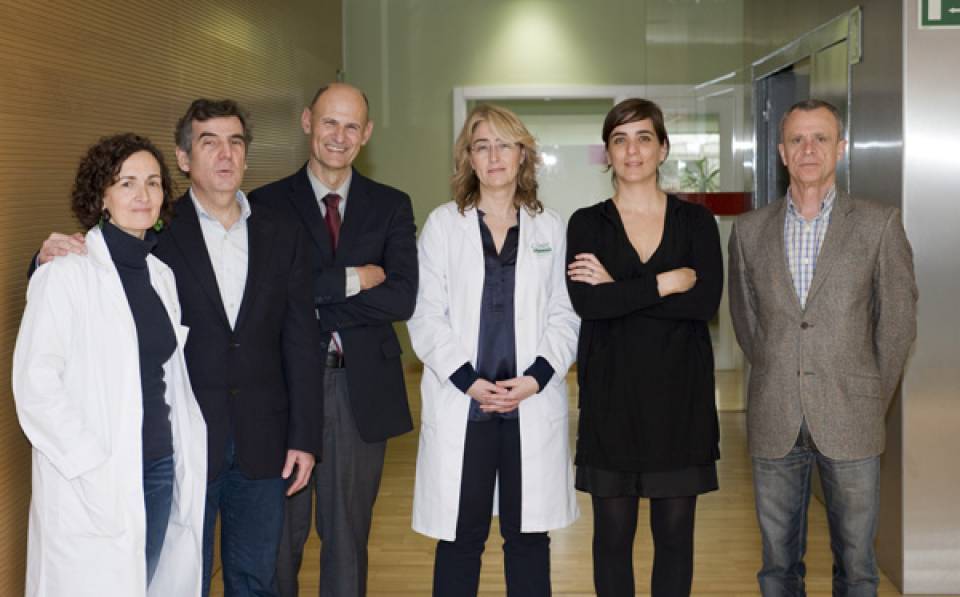For thousands of women around the world carrying a mitochondrial disease, having a healthy child can be a gamble. This set of diseases affect mitochondria, tiny powerhouses that generate energy in the body’s cells and are passed exclusively from mother to child. Parents wishing to prevent their children from inheriting mitochondrial diseases have typically relied on preimplantation genetic diagnosis to pick the healthiest embryos, but that is no guarantee of having a healthy baby.
Now, researchers have developed a simple technique to eliminate mitochondrial mutations from eggs or early embryos, which has the potential to prevent babies from inheriting mitochondrial diseases.
“Currently, there are no treatments for mitochondrial diseases,” says senior author Juan Carlos Izpisua. “Our technology may offer new hope for mitochondrial disease carriers wishing to have children without the disease.”
Living cells can have hundreds—or even thousands—of mitochondria, each of which contains their own DNA, a small collection of 37 genes that are essential for the organelle’s function. Mutations in these crucial genes can cause a wide range of diseases and can lead to fatality at birth, a life expectancy of only a few years or severe symptoms for decades.
“Most current approachesare trying to develop treatmentsforpatients who are already suffering from these diseases,” says Alejandro Ocampo, a research associate in Izpisua Belmonte’s lab and one of the first authors of the paper. “Instead, we thought ofpreventing the transmission of these mutations early in development.”
Researchers turned to two types of molecules, called nucleases, that can be engineered to cut specific strands of DNA, functioning as a sort of molecular “scissors.” The Salk Institute team designed nucleases to cut only mitochondrial DNA that contained specific, disease-causing mutations in eggs or embryos, leaving healthy mitochondria intact.
As proof of concept, the scientists, using mice containing two types of mitochondrial DNA, selectively prevented the transmission of one of the types to the next generation using specific nucleases in both eggs and one-cell embryos. Baby mice generated by this approach developed normally to adulthood. In addition, this method let the researchers successfully reduce the levels of mutated mitochondrial DNA responsible for two human mitochondrial diseases.
Izpisua Belmonte and colleagues are now investigating the possibility of translating this technology to the clinic in human eggs and early embryos.
Dr. Josep Maria Campistol, Medical Director of Hospital Clínic, IDIBAPS researcher and co-author of the study, stresses the importance for the patient of combining basic and clinical studies, "and the opportunity to do so with an institution like the Salk Institute and Dr. Juan Carlos Izpisúa, one of the leaders in basic research worldwide."
Dr. Nuria Montserrat, group leader at the Institute for Bioengineering of Catalonia, which has participated in the characterization and design of cellular systems used in the study, said: "the possibility of collaborating with the Hospital Clinic and Hospital Sant Joan de Deu in Barcelona, from our laboratory in IBEC, allows us to be in contact with clinicians in the field of mitochondrial disease and other genetic-related disorders." "The multidisciplinary approach led by Dr. Izpisúa from the Salk Institute highlights the importance of pooling the different areas of study in which we work," she adds.
Other researchers on the study were: Dr. Francesc Cardellach, researcher in mitochondrial diseases at Hospital Clínic and the University of Barcelona (UB); Dr. Dolors Manau and Dr. Salva Cívico, specialists from the Unit for Assisted Reproduction at 'Hospital Clínic; Dr. Jaime Campistol, head of the Neurology Department of Hospital Sant Joan de Déu in Barcelona.
Source: Salk Institute
Article reference:
Selective Elimination of Mitochondrial Mutations in the Germline by Genome Editing
Pradeep Reddy, Alejandro Ocampo, Keiichiro Suzuki, Jinping Luo, Sandra R. Bacman, Sion L. Williams, Atsushi Sugawara, Daiji Okamura, Yuji Tsunekawa, Jun Wu, David Lam, Xiong Xiong, Nuria Montserrat, Concepcion Rodriguez Esteban, Guang-Hui Liu, Ignacio Sancho-Martinez, Dolors Manau, Salva Civico, Francesc Cardellach, Maria del Mar O’Callaghan, Jaime Campistol, Huimin Zhao, Josep M. Campistol, Carlos T. Moraes, and Juan Carlos Izpisua Belmonte.
Cell, Volume 161, Issue 3, 23 April 2015, Pages 459–469. doi:10.1016/j.cell.2015.03.051

